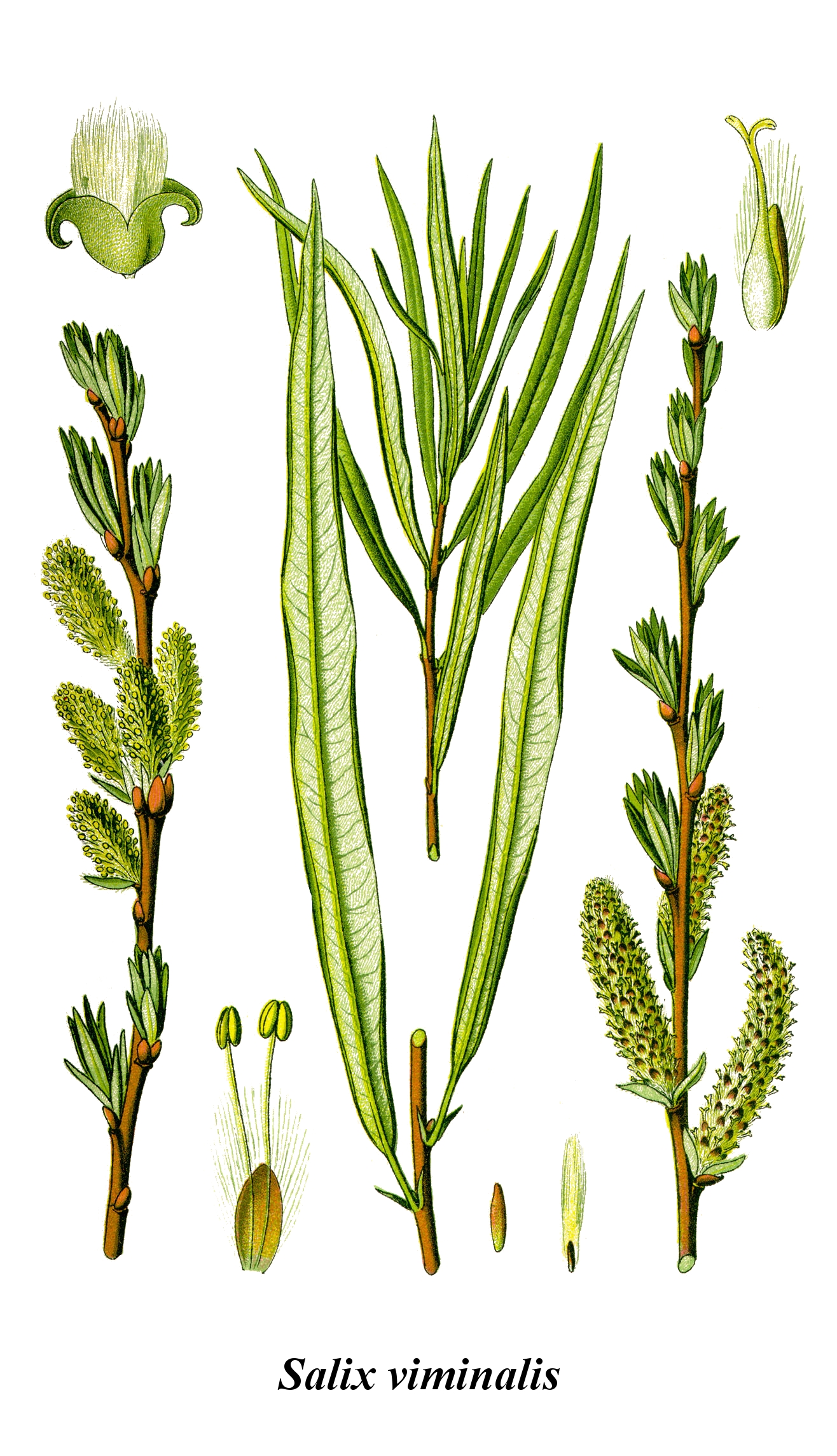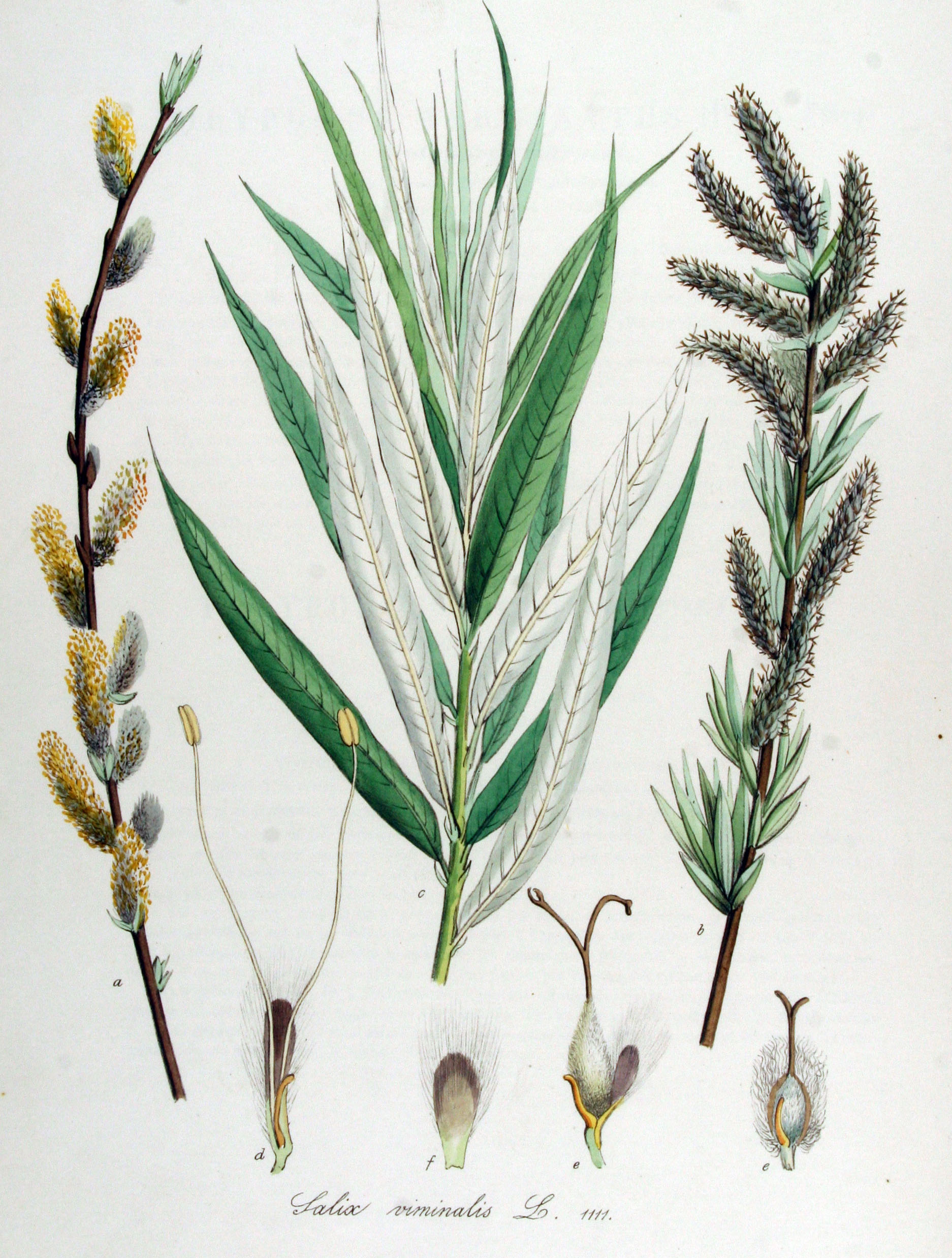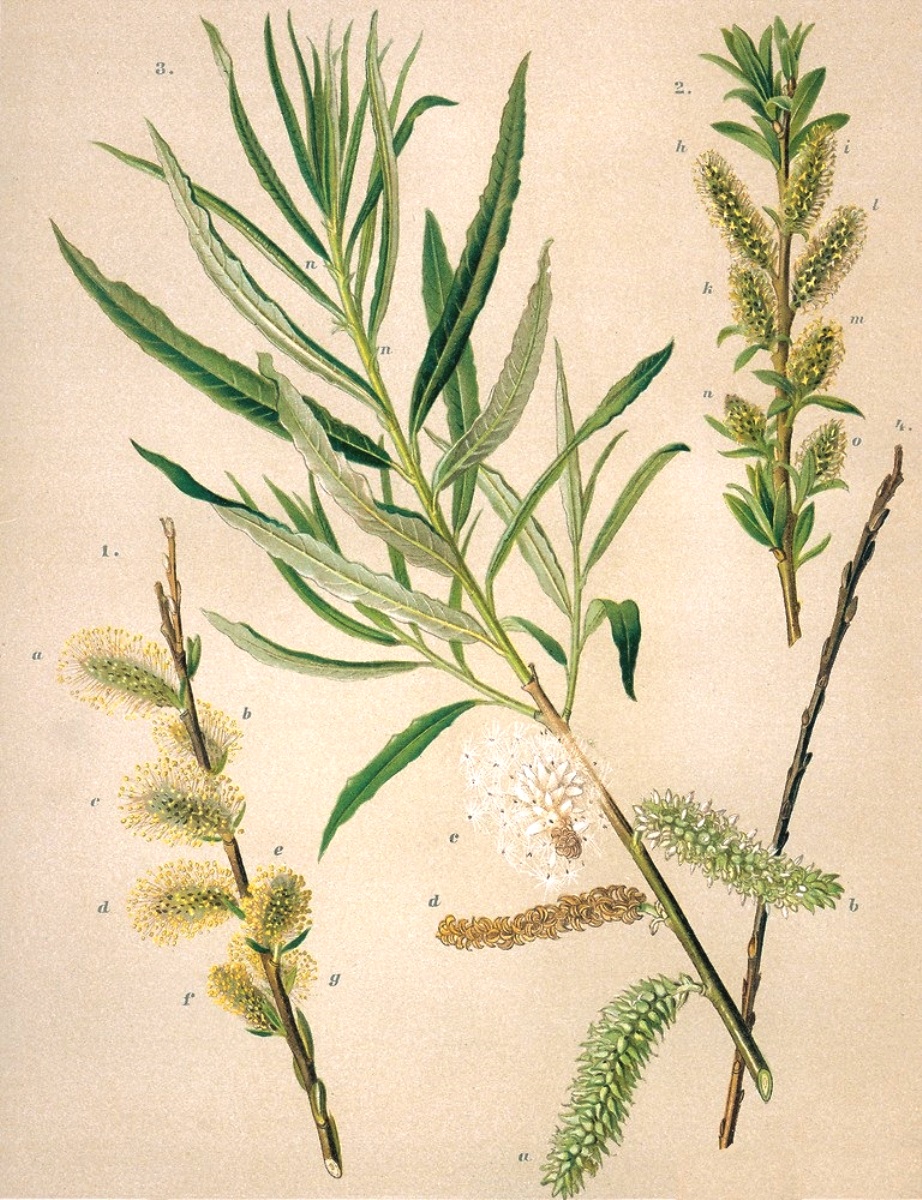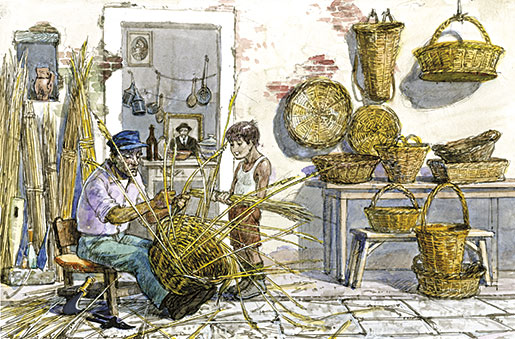The wicker can grow up to 10 metes tall. The growth is usually very rapid, but the tree itself is short-lived.
It has an expanded crown, with erect and ascending branches. These are initially brownish and hairy and then become smooth. The ramules are thin and pendulous and appear yellowish or reddish depending on age. The bark of the adult plant is gray-greenish with longitudinal cracks.
The leaves are simple, alternate, with a short petiole. They have a lanceolate shape, with a dark green colour on the upper page and a silvery colour on the lower one. The leaf margins are often folded down.
It’s a dioecious species, that means separate sexes. The flowers are gathered in inflorescences called 'aments' that appear before foliation. The male ones are ovoid and curved, at the beginning of silvery-grey colour and then yellow when the anthers appear. The female ones are smaller and pedunculated, greenish in color. The anthesis takes place in March-April.
The fruit is a small ovoid and pubescent capsule, which in summer opens releasing hairy seeds in the wind.
In Tuscany it was commonly called salcio or vetrice. The plant was always present in all farms because they covered a wide use in agriculture and not only. Wicker were widespread especially in places where, due to the excess of moisture, it was not possible to make other cultivation; they could be planted using cuttings of 1-2 years obtained from mature plants.
In January and February the wicker were completely pruned, leaving only the trunk. This remained 'zucconato' that is, devoid of any branch.
The branches were then selected according to their thickness and length. The shorter and thinner ones were used to tie the screws, the longer and thicker ones were instead used to tie the bundles or to make baskets, chests, cages, fishing pots and even furniture. The cultivation of wicker is now practically abandoned throughout our peninsula. The wicker in antiquity was the female tree par excellence that gives life and resumes it in a continuous cycle. It was also the sacred tree to Juno, in fact the first statues dedicated to her were made with her wood.




